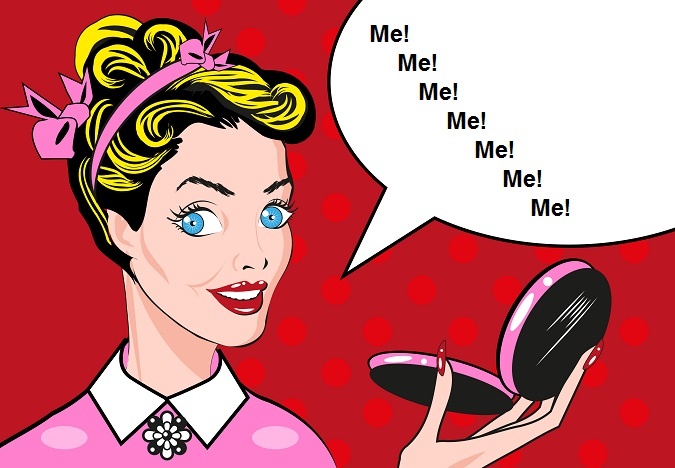Insurance Marketing Mistake #3: Succumbing to Self Absorption

Dale Carnegie is famous for teaching students how to win friends and influence people. His advice includes making others feel important and appreciated by showing interest, saying their names, soliciting their opinions, and asking them questions. These principles work well at dinner parties and in marketing. People love to talk and think about themselves.
That’s why “you” and “your” are possibly the most effective words in advertising. If you read the top headlines of the world’s most iconic copywriters, the words “you” and “your” are almost always included or inferred. The word “you” stops readers in their tracks and makes the message more relevant. Here are some examples cited in “How to Make Your Advertising Make Money,” by John Caples:
- The Secret of Making People Like You
- Why Some Foods Explode in Your Stomach
- Suppose This Happened on YOUR Wedding Day!
- Do You Make These Mistakes in English?
- You Can Laugh at Money Worries if You Follow This Simple Plan
Pop Quiz
If you were writing a marketing copy for your company, which statement would you be more inclined to use?
- We offer a comprehensive suite of insurance solutions.
- You will find the optimal coverage for your business exposures and budget because we offer a wide array of options.
We recommend that you use #2. It’s always more effective to flip the script, turning “we” statements into “you” statements. You ultimately communicate the same message, but you do so in a way that is more interesting and compelling to your target audience. You answer the question, “What’s in it for me?”
That said, many insurance brochures use “we” statements like #1. Audit one of your insurance organization's best marketing pieces. Count the number of times it mentions your company name, your product or service or “we.” Then, count the number of times it says “you,” “your,” or mentions the customer. Compare the totals. Which group had more mentions – your company or your audience? Most insurance marketing pieces talk significantly more about the seller than the buyer. Effective pieces talk about the buyer at least as many times as they talk about the seller.
Writing for Your Target Audience
When interacting with customers, make them and their needs the subject of the conversation. McKinsey reports that personalization in marketing helps businesses reduce their marketing costs by up to 50% and increase market returns, revenue growth, and customer growth by 5-10%.
One way to communicate with your customer is to find a premise or a common pain point — a situation or subject in which the target audience is interested. Use this premise to catch their attention and position your product or service as the solution.
Start by creating a customer persona — an ideal description of who your target audience is. HubSpot describes how to make your customer profile well-detailed.
Then, write to your prospects like you're a friend with their best interest at heart. Practice how to use "you" and "your" rather than "we" and "us." Write down a few of the “we” sentences that you found in your insurance marketing pieces and try transforming them into “you” sentences.
For example, “We offer the lowest prices” becomes “You’re going to be shocked by how much you can save with our lowest price guarantee.” See the difference? The first sentence is about you. The second sentence is about your reader — your potential customer.
Finding the Right Insurance Marketing Balance
Self-absorption in insurance marketing is delicate. You obviously must talk about your company, but you must do it in a way that resonates with the reader. Paint a picture of how your product/solution solves their problems and achieves their goals, using you-oriented messaging when possible. You will still have to use “we” in some instances but strive to use it less often.
Need thought leadership-focused content to help your prospects make informed buying decisions? We can help. Learn more about our Insurance Copywriting services.
